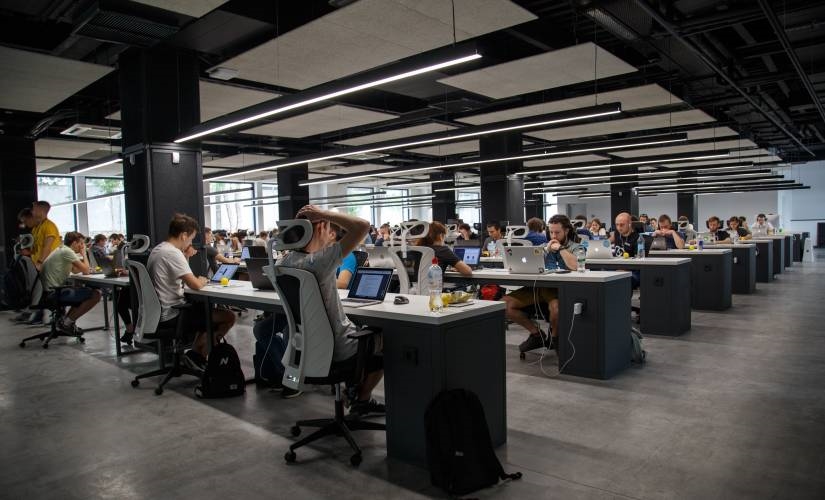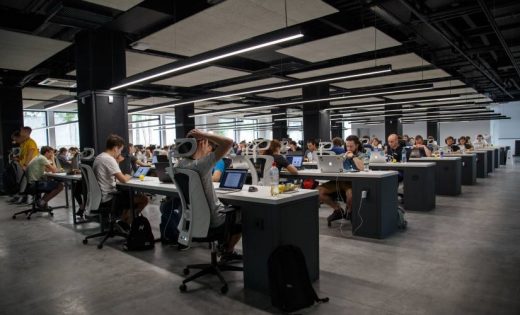Open Plan Offices Kill Productivity. Here’s What to Do Instead.
Open Plan Offices Kill Productivity. Here’s What to Do Instead.

For years, the business world lived under the false pretense that open plan offices were a killer idea. I myself even bought into the hype. At Netconcepts, the digital agency I founded (and sold in 2010), only the executives had offices with doors that closed. Open plan offices were a win-win for anyone looking to cut costs and spark collaboration among employees, or at least that was the general consensus. After all, an open plan office is bound to boost morale and ignite free-flowing conversations, right?
Not so fast. A new Harvard study revealed that open plan offices have the exact opposite effect on workplaces: they actually kill collaboration and productivity.
The study, published in the journal Philosophical Transactions of the Royal Society B, looked into the impact of open office spaces on employees at two Fortune 500 companies. The results were staggering. The participants had 70% fewer face-to-face interactions and sent 56% more emails in open plan offices. Rather than promoting collaboration, open air spaces caused employees to withdraw into the world of electronic messaging.
Even worse, the lack of face-to-face interaction had a direct impact on workplace productivity. Performance reviews showed a startling decrease in overall metrics – showing that office chit-chat might actually be a good thing for productivity.
Researchers Ethan Bernstein and Stephen Turban summarized their findings by stating: “Consistent with the fundamental human desire for privacy and prior evidence that privacy may increase productivity, when office architecture makes everyone more observable or ‘transparent’, it can dampen [face-to-face] interaction, as employees find other strategies to preserve their privacy; Rather than have an [face-to-face] interaction in front of a large audience of peers, an employee might look around, see that a particular person is at his or her desk, and send an email.”
If employees are less productive in this setting, and more likely to communicate electronically, wouldn’t it be better for them to work remotely? The numbers seem to suggest that’s the case.
Stanford economics professor Nicholas Bloom gained some revealing insights in a two-year study of workplace productivity at Ctrip, China’s largest travel agency. At the time, Ctrip was suffering from high attrition – with employees struggling thanks to long commute times and unaffordable rent near their Shanghai headquarters.
Bloom divided a group of 500 employees into two groups – a control group and remote workers. The control group continued working at Ctrip’s headquarters, while the remote team converted to working at home full-time.
The results speak for themselves. Published in The Quarterly Journal of Economics, the study showed a number of benefits in favor of a remote setting. Home workers saw a 13% increase in performance and improved job satisfaction. Even more impressive – their attrition rate was cut in half.
Bloom noted that the remote team had two things working in their favor – limited distractions and extra time. By being free of factors like office interruptions and commute times, the at-home workers were simply able to get more done.
As Bloom notes during his TEDxStanford presentation, the term “virtual office” summons images of lazy workers lounging on the couch or in pajamas. In reality, working from home has enormous potential. Remote workers tend to feel happier and more valued – signs of a productive and loyal workforce. Even better, they can save money. Ctrip was able to increase profits by $2,000 per employee by saving on office expenses.
Could remote teams really propel your business to be more productive and profitable? The answer is yes, according to innovative entrepreneurs like Tim Ferriss and Matt Mullenweg who have leveraged remote teams to their advantage.
Thankfully, you don’t have to play the guessing game when it comes to your team’s productivity. Time-tracking software like Time Doctor lets you keep a watchful eye on your employees from afar. This software monitors workplace activity by tracking time use, taking screenshots of employee computers and providing analytics on potential poor time use. Through this data, you can glean insights into your team’s productivity and even monitor your workers – without paying for an office.
When I interviewed Time Doctor founder Rob Rawson for my Get Yourself Optimized podcast, he noted that one of the main benefits of a remote team is that you can hire from literally anywhere in the world, meaning you have access to a much deeper pool of talent.
Managing a virtual team is easier – and more common – than ever before. Nearly 50% of millennials are already freelancing. The rest of the country will soon follow suit, as experts predict that the majority of workers will freelance in some capacity by 2027. There are already a wealth of tools and software available to help you manage a remote team like you would in an office setting.
Our perceptions don’t always reflect reality. Open plan offices don’t stimulate creative collaborations or enhanced productivity – in fact, it’s quite the opposite. With their extra freedom, remote workers have better performance and morale. Businesses should welcome the idea of ditching the traditional office and embracing a virtual team. It might just help them save money, avoid attrition and boost workplace productivity.
The post Open Plan Offices Kill Productivity. Here’s What to Do Instead. appeared first on ReadWrite.
(16)


